Amy Neftzger's Blog
July 31, 2021
RIP Vanderbilt Carmichael Towers (1966 - 2021)
The remaining Vanderbilt Carmichael Towers passed into eternal rest this morning at 9:00 AM central time. The towers perished as a result of assisted suicide with explosives. It was a dignified and spectacular end to a life of humble service.
The towers were born in 1966 and were a landmark on West End Avenue for more than fifty years. They achieved 153 feet and fourteen stories, housing thousands of students, legendary parties, and a few unwanted pregnancies. The ramen noodles cooked within those walls number in the millions.
While an example of modernism for their time, the towers eventually became outdated. Nevertheless, for decades these sturdy walls supported students through finals, all-nighters, and weekend keggers. The towers stood firm when drunken students couldn’t.
The towers are survived by a scenic campus with other historic buildings, state of the art housing, and a football team that could use a little work. We will remember the Vanderbilt Carmichael Towers with gratitude for a life well-lived and for supporting so many through those transitional college years. Rest in peace, Old Friends. The memories you made will live on.
May 13, 2018
How to Be The Best Mom Ever
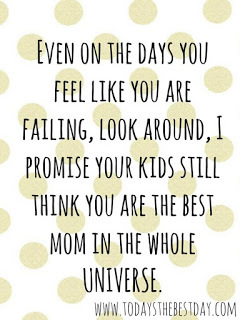
I always sign notes to my kids from “The Best Mom Ever.” After all, they’ve never had any other mother, so how would they know if I’m lying? Did they shop around before choosing me? Did they order their mom from a catalog before they were born?
The truth is that every mother who puts forth an effort is The Best Mom Ever because motherhood is the hardest job. Ever. No other job pays so little and demands 24/7 from a person, yet for some reason mothers are always thinking that we can do better.
But no one is perfect. If every kid had a mother who made their lives run as smoothly and sweetly as a milkshake, then no one would learn to be compassionate or how to handle stress, and these evolve from understanding that not everything can be controlled. No child will fully mature unless they learn personal responsibility, and if everything is managed for children they don’t learn to manage themselves. We need imperfect environments and bumpy roads to help us grow.
So if you want to be The Best Mom Ever ask yourself these questions:
1. Am I doing what I think is right?
2. Do I consider the best interests of my chil(dren) when making decisions?
If so, then relax. You may not be perfect, but you’re still The Best Mom Ever.
Happy Mother’s Day!
October 31, 2017
Looking for Creepy?
So, in preparation for Halloween I visited two of the most haunted places in Ireland. Because that's what I do for fun. Let's face it: anything that's haunted has a good story behind it, and I love good stories. So I had to explore.
The first place I visited is Loftus Hall, which offers special Halloween-themed tours of the diabolical building. Prior to taking the tour I spoke with a local who had gone through the building a few years ago and insisted that she would never set foot in it ever again because she was convinced it was completely evil. Lord Loftus was apparently not a very nice man, and the stories of his brutal mistreatment of servants and family members are so legendary he is rumored to have been close personal friends with the devil.
The second location I visited is in the Dublin Mountains and is known as The Hellfire Club. This building sits at the top of Mountpelier hill, and has a very dark past starting with the fact that the builder took stones from an ancient druid burial site to construct the building. The devil is reported to have been so outraged over this blasphemous act that he blew off the roof of the building within days of construction. Archeologists have recently validated that there is a 4,500 year old tomb beneath the building, so while not all the stories about the lodge and it’s owners may be true they appear to have their roots buried within some level of truth.
You can read more about the dark histories of these buildings in other places (see below for links). What I found interesting is that they share a story in common. No one knows if the same incident happened twice, or if folklore has attributed the same incident to 2 different locations. This wouldn’t be surprising, given that Lord Loftus also owned a hunting lodge in the Dublin Mountains, and the owners of these two lodges were both known for the brutal treatment and occasional murder of servants.
The story is that there was a group of individuals playing cards on a stormy evening, when a dark visitor arrived and asked for shelter while the storm passed. The gentleman joined the game and everything appeared to be going fine when one of the ladies accidentally dropped one her cards beneath the table. As the young lady reached for the card she noticed that the stranger wasn’t wearing boots, but had hoofs instead of regular feet. When the young lady screamed, the stranger burst into flames and vanished.
In the Loftus Hall version the daughter then becomes pregnant out of wedlock and is locked in her room for a decade or so (some say she died during this imprisonment and was buried within the walls of the house for a period, which is why her ghost remains there). In the Hellfire Club version the hunting lodge is turned into a place of satanic rituals complete with human and animal sacrifices (among other debauchery).
Regardless of what you believe, these two places definitely deliver the creep factor.
Here are a few photos I took of the Hellfire Club.



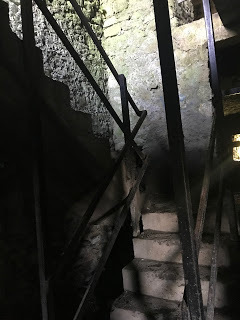

Loftus Hall doesn't allow pictures of the interior, but here's a quick picture I took as the moon was rising just prior to my visit.
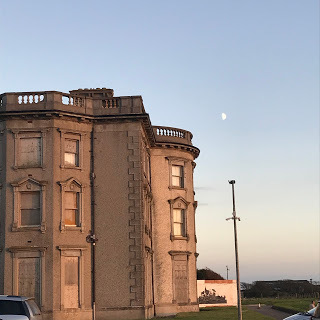
Learn more about Loftus Hall and The Hellfire Club by clicking on these links:
Loftus Hall
The Hellfire Club
June 12, 2017
Discovering Philip K. Dick

I wasn't a big reader of science fiction, so I’d never read Philip K. Dick’s work, despite having seen Bladerunner over a dozen times. However, I recently watched the Amazon series The Man in the High castle, and while I loved the first season I lost interest during the second season. That’s when I asked the age-old question: How much better was the book?
We all know that movies and TV series almost always fall short of the books upon which these are based. A visual medium has some advantages over the printed word, but it also has limitations. A picture is worth a thousand words, but the printed word has the ability to provide insight into the cognitive depth of the characters. This is where the Amazon series fell short for me: it began with an alternate reality in which the characters discover the possibility of an alternate reality that is our current reality.
If this sounds a bit like reality inception, that’s because it is - but this concept alone isn’t what made the book more interesting. The characters’ psychological responses to the threat (or promise) of a different reality and the conjectures they make on the plausibility of our current reality are fascinating. This provides insight into the subjective nature of perception, especially when it comes to politics. It’s more than a simple picture of what things would look like if Hitler had won WWII. This books explores human nature and our psychological defenses. In other words, it’s the human, rather than scientific, element that makes the book speak to us.
I have since finished both Do Androids Dream of Electric Sheep (which became the movie “Bladerunner”) and The Man in the High Castle, and am starting on Ubik, considered by many critics to be Dick’s masterpiece. I have a lot of respect for Philip K. Dick as a writer after reading these books. Even if you don’t think you’d like science fiction, you might want to sample a bit of this author’s work. It’s worth your time.
March 13, 2017
Letters to a Young Writer
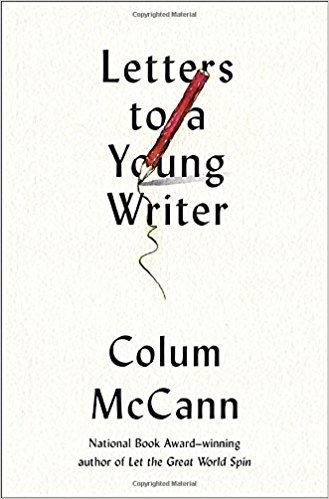
Colum McCann has put together a collection of essays advising would-be writers. In an age where anyone can publish, this book addresses the serious writer and not those who engage in the profession as an endeavor to earn a fast buck. This book is about the craft of writing and the process of creation. It’s not about getting rich quickly.
Sure, we’d all love a best seller. However, financially motivated art often lacks the substance needed to draw an audience. This book is about the process which may or may not result in financial gain. If you have the disease of writing it is in your blood and you will seek to cultivate it more or less like an addiction, rather than an occupation. There is no way not to write if it’s within you. The worst part is that simply scratching down words isn’t enough: those of us with the writing bug must also continually seek improvement. That’s where this book comes into play.
A good part of writing is finding the connection with readers, and that only happens when we’re engaged and willing to be exposed in order to establish this relationship. McCann addresses this in his essay “The First Line.” He advises that each story should open with a natural flow, without forcing too much information upon the reader too quickly. Think of it like a first date: the goal is to incite interest but not to overwhelm or frighten the reader. This is the art of pacing or as McCann says, “achieving a balance.”
The book addresses the rules of writing by stating that “there are no rules,” but when the author states that you can dispose of grammar only when you know these rules he is really saying that you must understand this agreement of structure between the writer and reader before making the decision of when to ignore it. It’s like knowing when to use slang and when to avoid it. Once you know the purpose of these rules you can make a more informed decision about how well your piece fits into - or needs to be free from them.
This book was outstanding and one of the best I've read concerning the art of writing. It encourages creative types to get out of their internal vortex and to see their work from the reader's perspective, which is essential for gaining an appreciative audience. It also covers topics such as writer's block (which he refers to as "The terror of the white page"), why we tell stories, and handling critics. The essays are short and filled with bits of wisdom and insight that can assist writers at all stages of a career.
If you loved Stephen King's "On Writing" then this book is definitely for you. If you’re very new to writing and looking for practical advice on how to get your published, then the book isn’t for you. However, if you know that writing is your calling and there’s no way to avoid it - this is highly recommended reading.
Letters to a Young Writer is releasing on April 4, 2017.
October 26, 2016
Book Review: The Pier Falls
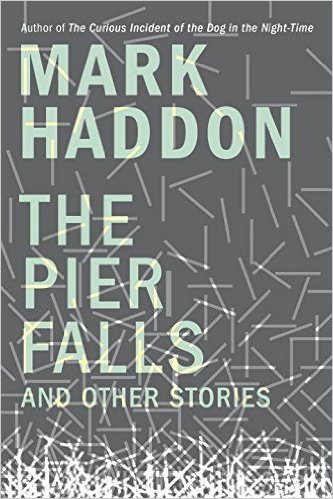
If I were to compare the craft of writing to the field of architecture, I’d say that Mark Haddon is like the Frank Lloyd Wright of the literary world. His writing is modern and graceful with some experimental elements, but it’s always structurally sound and high quality. Haddon is most well known for his 2003 book The Curious Incident of the Dog In The Night-Time, but he’s been publishing his work for over two decades and has a number of titles for both adults and children. His latest book is a collection of short stories called The Pier Falls and Other Stories.
The issue with many short story collections is the lack of relationship the stories have to one another. Sometimes I feel like a shopper at a bargain bin when I read these types of books, wondering if the contents of the bin even came from the same source. However, this collection holds together through several underlying themes, as well as the consistency of the writing. Haddon takes the reader to an equilibrium on the edge between mythology and modernity, showing the transcendence of the human experience through his characters. There’s a rational-spiritual dichotomy peeking through the prose at numerous points, but the text always feels real.
Because these are short stories, a number of different themes are explored in different settings. For example, in the title piece The Pier Falls the author explores tragedy by showing us both the horrible and the absurd manifested side by side as a pier collapses into the ocean. Individuals grasp for life or succumb to death as a Strauss recording continues to play over loudspeakers during the event, reminding victims that life will waltz on with or without them.
In the story The Island, we’re given a re-telling of Ariadne’s final days on the island of Dias. Unlike Homer’s Odyssey, this version is in first person and we get to hear Ariadne process the events leading up to her death as she struggles for survival.
The theme of Loneliness also comes up in several of the pieces, with each story examining a different facet of it. We see the complexity of human relationships as circumstances and situations molds these bonds. A particular experience may have a lasting impact which can bring people together or tear them apart from one another or themselves.
In The Woodpecker and The Wolf a woman goes to space to escape relationships, but then becomes pregnant. The space mission encounters troubles and the woman watches the other astronauts perish, including the baby’s father. The struggle for survival and the new life for which she now feels responsible causes her to reassess her relationships and what she valued in them.
Diazepam makes an appearance in several of the pieces, acknowledging our modern tendency to self-medicate. This theme of self-medicating is explored more fully in the story titled Bunny, in which a morbidly obese man feels that his hunger and disappointment are more painful than the consequences of his overeating, and so he eats. Lots.
Haddon is a modern writer that I strongly recommend to many would-be writers. His style is modern, functional, and graceful without being ostentatious. His work definitely falls under the label of "literary" and shows remarkable facility to move back and forth between verb tenses keeps the reader centered on the story without feeling the jerk between past and present. His characters are complex but not over-explained or overtly obvious. The plots are cultivated in such a manner as to appear natural and yet perfectly manicured at the same time. Writing should always reflect life, but literary writing uses language and plot structure to explore it more fully. Haddon accomplishes that in these stories.
Several of the pieces in The Pier Falls have been previously published in literary journals, so if you’re reluctant to plunge into the whole book you can find a few of these stories online. Whether you read a sample of these stories online or purchase the entire book is up to you. Regardless, I encourage individuals looking for some great modern fiction to read them. The writing feels effortless, as good writing should, but afterwards it also causes me to marvel at how well it’s put together. It’s the sort of book that easily gets me on the train without me first asking where it will go or when it will arrive. I know that I’ll enjoy the ride, and the scenery will be worth my time.
October 17, 2016
Genevieve Cogman's Invisible Library
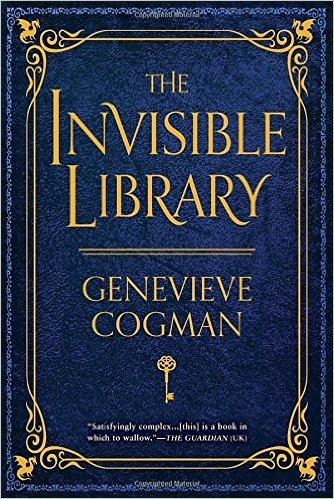
Genevieve Cogman is the author of The Invisible Library fantasy book series for young adults. A few months ago I received an advance review copy of the first book from the publisher and I enjoyed the story very much. The second book in this series have now been released and I’m looking forward to reading it. What I enjoyed most about the first book was the concept of a hidden library hat contains versions of books from alternate universes. The thought that there could be hundreds or thousands of versions of our favorite stories is appealing to a reader such as myself. Aside from the incredible library, what caught my attention in her writing were the strong characters and action sequences - something we don’t typically associate with a book about books. This is truly an adventure novel that keeps moving. I had an opportunity to interview Genevieve and here are her responses to some of my questions.
Q: You’ve written some strong female characters in this book. Can you describe what inspired each of these (Irene, Coppelia, and Bradamant) characters?
A: I’m not sure any of them have a single point of inspiration. Irene is the standard protagonist who just wants to get on with the job, and finds herself with too many things to juggle at once. She’s also a thorough bookworm and daydreamer (which is why she picked the name “Irene”, after all) and a competent operative, a little bit Modesty Blaise though also a lot of Moneypenny.
Coppelia’s the mentor who knows more than she’s prepared to admit, a Librarian with a lot of history (such as why she’s got a mechanical arm) and her own personal tastes in literature. (For the record, she likes science fiction, particularly books about artificial intelligence.)
And Bradamant’s the rival who has a past history with the protagonist, and whose methods and morality are different enough that they come into conflict about how to achieve their goals, though they end up working together. She’s a person whose first argument is always “the ends justify the means”, and who sees herself as a misunderstood hard worker who makes the hard choices which nobody else will commit to.
I think that ultimately any of them could have been male or female. First and foremost, they’re people.
Q: What sort of research did you do in preparation for (or during) the writing of these books?
A: I did quite a lot of investigation on the internet into things like the geography of London, famous missing or never-written books, the British Museum and the British Library, and how to spell Liechtenstein. I also read and reread my collected Sherlock Holmes stories by Sir Arthur Conan Doyle to try and get the vocal patterns and habits correct. And for the action scenes, I watched quite a lot of Hong Kong action movies (a long-term addiction of mine).
Q: What scenes were the easiest to write (and why)? Were any scenes difficult?
A: I think the hardest scene to write may have been the one where Irene is explaining about the Library to Vale, because I was trying to convey quite a lot of information, but I didn’t want the scene to get boring or slow down too much. I’m not sure that I can say any scene or scenes was the “easiest”. They all took work.
Q: What authors do you enjoy reading (and what do you like about their work)?
A: I don’t want to give you a list of several dozen authors (which would barely be scratching the surface), so I’ll try to think of a few favourites. Lois McMaster Bujold, Kage Baker, Naomi Novik, Terry Pratchett, Ben Aaronovitch, Paul Cornell, Tamora Pierce, Diane Duane, Steven Brust, Charles Stross, Barbara Hambly, Pat Mills, GK Chesterton, JRR Tolkien, Mary Renault, John Dickson Carr, JK Rowling, John M Ford, Barry Hughart... I find a wide spectrum of things in their writing, including interesting characters, well-handled narrative, good description, brilliant dialogue, imaginative concepts, and stories which sweep you along once you get into them and make it hard to stop reading. I want to read different things at different times. Sometimes I really want a book that makes me think (like John M Ford or Mary Renault), and sometimes I just want something which I can settle into and enjoy.
Q: If you’ve ever read a book more than once, please give the name of the book and explain why you chose to re-read it.
A: If I’ve read a book once and enjoyed it, then I’m almost certainly going to read it again at some point. (There’s a reason why my flat is overfull of books...) I’m afraid the answer to this question is “far too many to count”, and “because I enjoyed reading it the first time”. I’m a very fast reader.
Q: What are the top 3 items on your bucket list?
A: At the moment:
See a live performance of the musical Elisabeth.
See a production by the Takarazuka Revue while in Japan (this includes going to Japan!)
Visit Hong Kong.
Q: Tell me about your favorite things: favorite travel location, favorite food, favorite drink, favorite activity, favorite museum, favorite library(ies), favorite book, favorite movie, and favorite band or song.
A: Bearing in mind that all these are my current favourites, and may change in the future if I come across something new which I like better:
Favorite travel location - Venice
Favorite food – Chicken liver risotto (my father’s recipe)
Favorite drink - Coffee
Favorite activity - Reading
Favorite museum – I used to love going to the Geological Museum in London, though I haven’t been there for ages.
Favorite library(ies) – No particular favourite, they’re all valued.
Favorite book – Journey to the West, by Wu Cheng’en
Favorite movie – Brotherhood of the Wolf
Favorite band or song – Pardonne-moi, by Mylene Farmer
Q: What are you working on now?
A: I’m currently working on book 4 of the Invisible Library series. No rest for the wicked...
Find out more about Genevieve Cogman:
Author Website
Author on Goodreads
Enter The Invisible Library sweepstakes
The Invisible Library on Amazon
The Masked City on Amazon
https://www.amazon.com/dp/1101988665/
July 11, 2016
Nashville's Hot Chicken Festival
For those of you outside of Music City, the legend of Nashville Hot Chicken started with Prince’s. The story begins with an unfaithful man and a woman’s quest for revenge when the cheating rascal returned. Instead of cooking his favorite fried chicken, she doused the bird in some very serious quantities of cayenne pepper and waited for the fireworks of her retribution to take hold. The problem was that Thornton Prince loved this new chicken recipe and after sharing it with a few friends he decided to open a restaurant. You can read a more detailed description about the history of hot chicken here. There's also a Time article on Nashville hot chicken as well as a piece on the Nashville Public Radio's website.
While Prince’s was the first hot chicken shack to appear, there are now hot chicken restaurants all over Nashville. The dish has grown in popularity since the inception of the hot chicken festival and even upscale restaurants now have hot chicken appetizers or dishes on the menu. I've even had hot chicken tacos (click this link and scroll down the menu).
If you attend the Hot Chicken festival, be aware that the lines are often long, so it’s not as easy as one would think to sample all the different restaurants side-by-side (a dream of mine that has yet to become a reality). However, it’s not unusual for the lines inside the actual restaurants to be long, also. So don't let the wait dissuade you. It's worth it.
Advice for attending Nashville's Hot Chicken festival:
1. Take a cab, Lyft, or Uber. Traffic and parking are both congested near East Park during the festival.
2. Bring at least some cash - not all vendors accept cards (note: if you visit Prince's actual restaurant, they don't accept cards there, either.)
3. The weather and the chicken are both too hot for pets. Leave them at home in the AC with the TV tuned to their favorite station or send them to a spa.
4. Hot chicken comes in various degrees of hotness, but one vendors "XX Hot" may be another vendor's "Medium." Assume that even medium will have some heat and that the most extreme level of heat is "native Thai" or beyond.
5. Related to the above, I like to sample different levels of heat from the same vendor because the flavor of the chicken changes with the heat.
6. Get a dipping sauce - it not only adds flavor, but it can assist in cooling your taste buds, if needed.
7. There is no wrong way to eat hot chicken. You can alternate with bites of bread and pickle, you can make a sandwich, or you can just eat the chicken. Experiment and find what you like.
8. Check out the Hot Chicken Festival website for more information.
Below are a few pictures of my pet gargoyle attending the festival. Yes, he loves hot chicken, too. After all, he is "Nashville’s Finest Gargoyle" - why wouldn’t he love Nashville’s finest food?


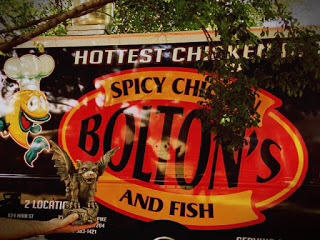

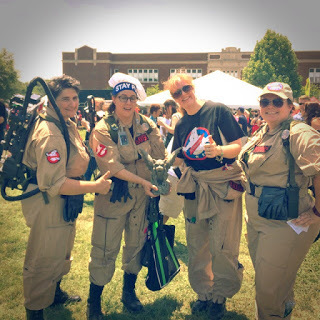
May 23, 2016
15 Things Every Woman Should Know

I’m almost officially old. Almost, but not quite. I have a lot of youthful mischief, so people are often surprised when they learn my actual age. They can tell I’m not the 21 years that I claim to be, but they’re often cautious about guessing the true number out of fear of being impolite.
While I might not always act my age (whatever that may be), I have learned a few things over the years. Creating your path takes a lifetime and the work to do so is what shapes a person, but the more we learn early in life, the better off we’ll be. This is true for everyone, but it's particularly important to women because we face certain challenges and social expectations to which men aren't subjected. That said, here's my advice for the next generation of women:
1. You will face double standards because of your gender, and these may not be blatantly obvious. Know that these exist, but don't ever let them hold you back.
2. No one will look out for you better than you can. This includes lawyers, doctors, husbands, wives, and other professionals - so make sure that you fully understand all advice that you're being given and never delegate your decisions to someone else because of their expertise or position of authority. Those individuals may be knowledgeable within their fields, but they don't know you. You'll make better life choices if you participate in those decisions actively.
3. If you see a man treating someone badly because he thinks that person deserves it, that means that there are circumstances under which he will treat you the same way. Just because he approves of you at the moment doesn't mean that things won't change. If you're in any type of relationship with someone like this, it's only a matter of time. There are women who are like this also, so learn to set boundaries. Then stick with them to protect yourself.
4. No one knows what you’re capable of doing or becoming. Not even you. Figuring out who you are is a lifelong journey. There’s trial and error involved. Mistakes are not only good, they’re important because without them you’ll never know what roads not to take in the future.
5. When you do make mistakes (because you will), it's not the end of the world. No one does the right thing in every situation because there will be times when you only have part of the information and you'll think that you're doing the right thing. It could be days or years later when you finally get all the facts. You can always pick yourself up and start moving forward again, even if it's at a slower pace. The important thing is to keep moving.
6. Expanding on the point above: never hide from your mistakes. They're written in stone and can't be erased, but that doesn't mean that you can't reshape the stone to work those blemishes into something better. If you hurt anyone you should do your best to resolve the situation, no matter how much time has passed. If you can't find the person, look for someone else to help so that your mistake makes life better for someone else because of what you've learned. Own your mistakes, and also own the corrections. It's part of being true to who you are.
7. Your value is not determined by the person you’re with at the moment. Not your boyfriend or husband. Not your father or family. Not your friends. Your value is in being you, so as soon as you rely on any of these other things to feel your worth, you're actually devaluing yourself.
8. The people around you can color your thoughts, so surround yourself with the colors that are best for you. These are not necessarily the colors that make you more comfortable - they’re the ones that make you grow. Thoughts, opinions, attitudes and lifestyles are all colors that paint the picture of your life. Allow room for people who are different from you and your life will be filled with beautiful things.
9. You don’t have to be thin or fat. You just have to be you. Thin and fat are relative. So get over these definitions, especially since they vary by culture and time periods. You will never be beautiful if you let the prevailing cultural definitions of beauty define you.
10. Don’t worry about what others think about you. When we’re younger we spend way too much time worrying about how others will perceive us. A sign of maturity is understanding that other people’s opinions of you are based more on themselves than on you.
11. Change yourself for the right reasons, and never compromise for the wrong ones. If someone wants to be with you to change you, then you probably don’t want to be with that person.
12. Your career is over when you want it to be over. You’ll have setbacks. People will lie about you to advance themselves (more times than you’ll ever be aware). These situations aren’t fair, but they’re also not the end. No matter how bad things look at any time, it’s only the end when you want it to be.
13. There will be times when you're discriminated against for being a woman. You might not be aware of all of them, but it will happen (and probably already has). Try not to be angry or bitter, even though it may be difficult. Bitterness never advanced any cause, it only sets things back. Look for ways to deal with these situations as constructively as possible, and also remember those times when you see discrimination in any form. If you see someone being discriminated against for any reason (regardless of gender) and you're in a position to do something, don't be idle. Do something. Sometimes all it takes is for one person to speak up to make a difference, and that voice usually has to come from someone other than the person being discriminated against.
14. Kindness is free but one of the most valuable resources on earth. You have no idea what anyone else is going through and taking a moment to hold a door for a mother struggling with a stroller or being patient when getting bad service in a restaurant can make a huge difference to another person. Try to be kind as much as possible, and (as the Dali Llama says) it is always possible.
15. Moving forward is not always moving up. You can benefit a lot from those times when life appears to go backwards because you didn’t move in the direction that appeared the most advantageous. Maybe you didn’t get the promotion, but that larger salary may have come with a large price tag on other areas of your life. In addition, lateral (or slightly downward) career moves can build different skills that can help you later in life.
This is a long list, and I could make it even longer - but I think I've made my point. The bottom line: never delegate your happiness or success to anyone else. If you do, you'll never have either of those things.
May 4, 2016
Miles Ahead: A Movie Review
This past weekend I went to go see the new movie about Miles Davis starring Don Cheadle. The movie, called Miles Ahead, utilizes creative license and mixes fact with fiction in order to get at the truth a little more clearly than facts alone.
It may sound absurd to those who segregate information into discrete categories such as fact and fiction or truth and lies, but people are far more complex than most binary categories can yield. One of the advantages of this movie is that it drives this point. It addresses the complexity of Miles as an aging creative force in a world that sees art as a revenue source. It also explores the precarious dependency between artist and those who monetize art.
Miles was a master of improvisation, and given the way he interpreted music I think he would enjoy this interpretation of his life. After all, if we only look at something from beginning to end, we miss some of the larger themes that get buried in the day to day events. This movie realigns time and abruptly jumps from one time period to another in a series of cycles. The technique reveals the leitmotifs within the life of Miles Davis.
Don’t see this movie if you’re looking for a biography of Miles Davis. While some events in the movie are accurate, this is not a historical retelling of his life.
Go see the movie if you’re interested in an interpretation of the essence of Miles. One of the reasons I suspect that Miles would prefer this movie to a factual chronological biography is because, like his music, it tells us more about Miles than the events in his life could.



